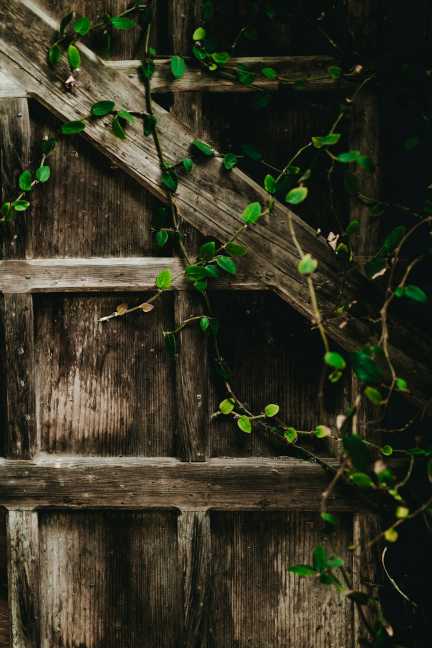Gardening is a wonderful way to connect with nature and create a beautiful outdoor space. One way to make your garden even more special is by making it wildlife-friendly. By creating a garden that is welcoming to birds, bees, butterflies, and other animals, you can help support local ecosystems and create a vibrant and diverse garden that is a joy to be in.
There are several simple ways to make your garden more wildlife-friendly. Here are some tips to help you get started:
Plant Native Species
One of the best ways to attract wildlife to your garden is by planting native plants. Native plants are well-adapted to your local climate and soil conditions, making them more attractive to native wildlife. Native plants also provide food and habitat for local birds, bees, butterflies, and other animals.
When selecting plants for your garden, choose a variety of species that bloom at different times of the year to provide food for wildlife throughout the seasons. Consider including flowering plants, shrubs, trees, and grasses to create a diverse and dynamic garden that will attract a wide range of wildlife.
Provide Water Sources
Another key element of a wildlife-friendly garden is providing water sources for wildlife. Water is essential for birds, bees, butterflies, and other animals to drink and bathe. By including a birdbath, pond, or other water feature in your garden, you can attract a variety of wildlife to your outdoor space.
Make sure to keep water sources clean and filled with fresh water to ensure that wildlife can safely access the water they need. You can also consider adding rocks or floating plants to provide landing pads for birds and insects.
Create Habitat
In addition to food and water, wildlife also need shelter and nesting sites. By incorporating habitat features into your garden, you can create a welcoming environment for birds, bees, butterflies, and other animals.
Consider adding birdhouses, bee hotels, butterfly houses, and bat boxes to provide shelter and nesting sites for wildlife. You can also create brush piles, rock piles, and log piles to offer hiding spots and natural habitats for a variety of species.
Avoid Chemicals
To create a truly wildlife-friendly garden, it is important to avoid using pesticides, herbicides, and synthetic fertilizers. These chemicals can be harmful to wildlife and can disrupt the ecosystem balance in your garden. Instead, opt for organic gardening practices and natural pest control methods to maintain a healthy and thriving garden.
By using compost, mulch, and natural fertilizers, you can improve soil health and promote a diverse and balanced ecosystem in your garden. You can also encourage natural predators, such as ladybugs and lacewings, to help control pests in a safe and environmentally-friendly way.
Provide Food
In addition to planting native species, providing water sources, creating habitat, and avoiding chemicals, you can also attract wildlife to your garden by offering supplemental food sources. Consider hanging bird feeders, hummingbird feeders, or suet feeders to provide food for birds throughout the year.
You can also plant nectar-rich flowers, such as coneflowers, bee balm, and butterfly bush, to attract pollinators like bees and butterflies. By providing a variety of food sources, you can support a diverse range of wildlife in your garden.
Create a Wildlife-Friendly Garden Design
When planning your wildlife-friendly garden, consider the layout and design of your outdoor space. Create meandering paths, open spaces, and sheltered corners to provide a variety of habitats for wildlife to thrive. Incorporate a mix of heights, textures, and colors to create visual interest and attract different species of wildlife.
You can also include features like bird baths, feeders, and nesting boxes in strategic locations to encourage wildlife to visit and make your garden their home. By designing your garden with wildlife in mind, you can create a beautiful and enriching outdoor space that is a joy to experience.
Maintain Your Garden
Once you have created a wildlife-friendly garden, it is important to maintain it to ensure that it continues to support local ecosystems and attract wildlife. Regularly water, weed, and mulch your garden to keep plants healthy and thriving. Prune plants, remove dead foliage, and clean bird feeders and water sources to provide a safe and welcoming environment for wildlife.
By spending time in your garden, observing wildlife, and making adjustments as needed, you can create a dynamic and vibrant outdoor space that is a haven for birds, bees, butterflies, and other animals. Enjoy the beauty and diversity of your wildlife-friendly garden and feel proud knowing that you are helping to support local ecosystems and protect wildlife.
In conclusion, creating a wildlife-friendly garden is a rewarding and fulfilling way to connect with nature and support local ecosystems. By planting native species, providing water sources, creating habitat, avoiding chemicals, offering food, designing your garden with wildlife in mind, and maintaining your outdoor space, you can create a beautiful and welcoming environment for birds, bees, butterflies, and other animals. Take the time to create a wildlife-friendly garden in your backyard and enjoy the beauty and wonder of nature right outside your door.

